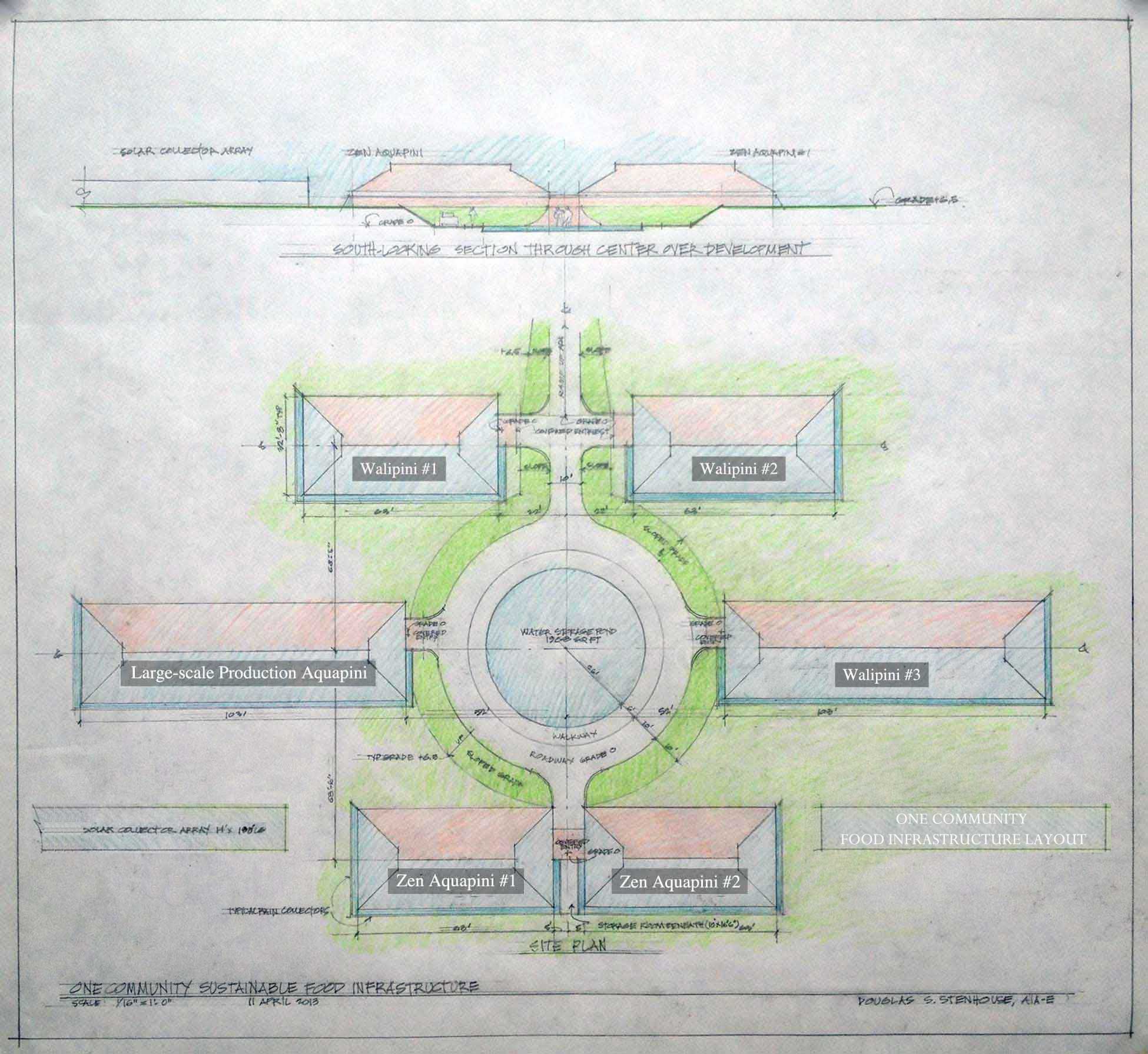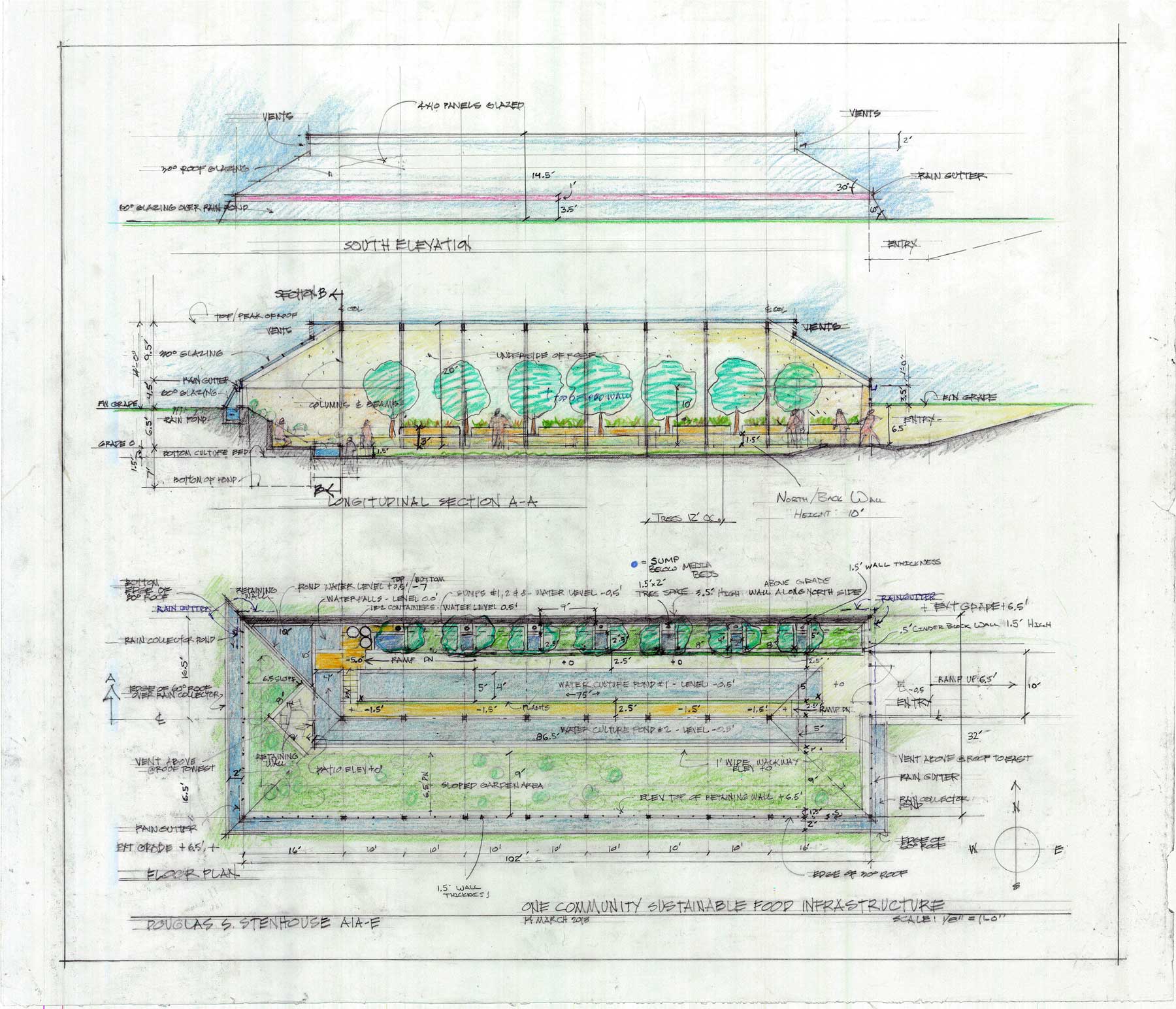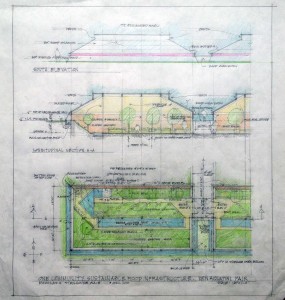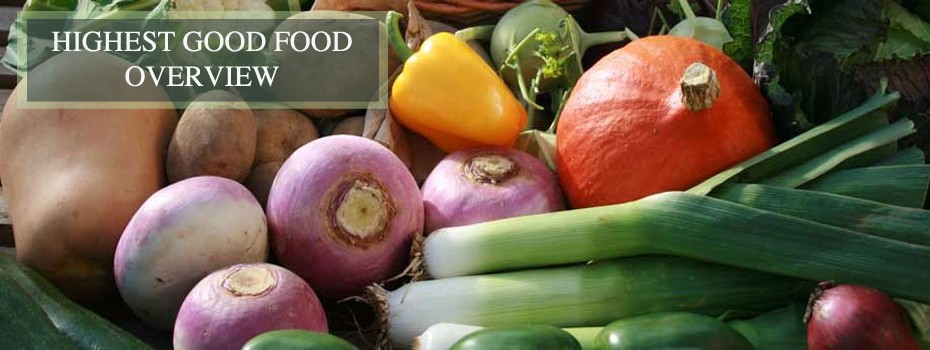Highest Good Food Infrastructure
One Community’s food infrastructure is just one component of our For The Highest Good of All approach to open source project-launch blueprinting strategy for self-replicating and self-sufficient teacher/demonstration communities, villages, and cities to be built around the world. Just as we will be showcasing a diversity of sustainable housing modes and alternative energy infrastructure, so too will we showcase a diversity of food production methodologies ranging from earth-regenerative permaculture farming to greenhouses to aquaponics farms.
COMPLETE DETAILS AND OPEN SOURCE HUB
OPEN SOURCE AND FREE-SHARING FOOD SYSTEMS PORTAL
RELATED PAGES
INFRASTRUCTURE OVERVIEW ● SOLUTION BASED THINKING ● OPEN SOURCE PURPOSE
PHASING IN FOOD PRODUCTION
Even with traditional methods one person working full-time on food production can produce enough food to feed 30; with aquaponics that same person can produce enough food to feed 300. Our goal is to start building temporary greenhouses within the first week to supply food until our aquaponics farms and traditional growing methods are producing. We will purchase goats to provide milk and chickens to provide eggs and combine this with the temporary greenhouses to make us what we hope will be about 70% food self-sufficient within 3-4 months. The first of the aquaponics food farms are estimated to take no more than 6 months to build and test and another 2 months or so to be producing food. Until we are successfully growing food we will be buying it from local producers and suppliers with the goal of supporting sustainable and ethical practices.
Because our goal is to be as self-sufficient and sustainable as possible, it is looking more and more like goat milk, eggs, and shrimp and fish produced as part of our aquaponics farms will likely be our only non-vegetarian sources of animal protein.
AQUAPONICS TO TAKE US BEYOND FOOD SUSTAINABILITY
 |
 |
 |
Initially One Community will build three different sustainable food production models. There will be 3 walipini greenhouses, and 3 aquapinis (aquaponics housed in a walipini): 1 purposed for large-scale production of lettuces and the other most commonly consumed vegetables, and the other two purposed for maximum food diversity and beauty (click to learn why). Once established as part of our long-term plan, these 6 food production facilities have been estimated to be capable of providing enough volume and variety to feed all of One Community and our visitors.
Our initial team of Community Pioneers should be able to complete the first two of the walipini / aquaponics “aquapini” geothermal aquaponics food farms with 3-4 months of effort and an average weekly team commitment of 200 hours per week to this task.
YIELD AND USE
Aquaponics versus traditional farming requires 2% of the water, 5% of the space, and produces TEN TIMES the yield. Traditionally used for producing cabbage, lettuce, basil, tomatoes, okra, cantaloupe, bell peppers, beans, peas, cucumbers, radishes, watercress, taro, strawberries, melons, onions, turnips, sweet potato, and most herbs, aquaponics also produces fish and shrimp! And just 25 feet of growing space will produce enough annual food to completely feed a person.
The reason we are building 6 combination aquaponics and walipini systems is to open source and free-share designs and tutorials for maximum sustainable food diversity, three different walipini food production options, to experiment with new foods, to demonstrate a variety of different fish/shrimp/bivalve/frog models of fertilization, and because they will create enough growing space to:
● Support our own resident bee colony
● Create system redundancy and increase food security
● Provide a worthwhile amount of surplus fish and shrimp if we choose
● Grow the diversity (click here for details) of food we desire for One Community and all it’s visitors
ORGANIC FOOD SALES
One Community is exploring partnerships with organizations to purchase all food that we produce above and beyond our own needs with purchase price averaging between $1-$2 per pound when purchased by them or any local grocery store.
FREQUENTLY ASKED QUESTIONS RELATED TO FOOD
Q: Is One Community going to be a vegetarian community?
No, we are planning on having chickens for eggs and goats for milk and additional animal products may be an option if agreed upon through the consensus process.
Q: How do you intend to produce spices, mill grain for flour, produce cooking oil, etc. etc.
“100% food sustainability” means we will demonstrate and open source share a model that doesn’t need external food sources. Having achieved this, what we produce internally versus choosing to buy will be decided through the consensus process.
Q: Can people choose not to eat in the group dining hall?
Yes, the SEGO Center City Hub will provide group dining space and the kitchen, where people choose to eat is up to the individual.
Q: Would we be allowed to have a hot plate stove (single burner)/microwave/toaster oven in our private residence if we wished to cook apart from the rest of the community from time to time?
Yes, and all decisions like this will be decided through the consensus process on the property that all Pioneers will be a part of.
Q: Do you plan to raise cows or other large grazing animals for milk or food.
Probably not due to the sustainability issues with this approach to food. This could however change if agreed upon through the consensus process.
Q: What if I want something that isn’t on the community menu?
The community menu will be agreed upon through the consensus process. If a person wanted something not included on that menu, then they would be welcome to purchase and provide it for themselves.
Q: What if you are unable to meet your timelines for food self-sustainability?
We have funds built into our business plan to provide food for an additional year if necessary.
Q: Are your aquaponics designs your only plan for food production?
No, we plan to grow a food forest, organic garden, and incorporate different methods of food production into each Pod we build in support of our open source goals and global mission.
CONSULTANTS ON OUR AQUAPONICS DESIGNS
Avery Ellis: Aquaponics Specialist and owner/operator of Integrated Aquaponics
Charles McLean: Architecture & Urban Agriculture Designer, Professor, and owner of OM Greengroup
Douglas Simms Stenhouse: Architect and Water Color Artist (see: transparentwatercolor.com)
INSPIRATIONAL VIDEO
This 12-minute video on de-desertification/afforestation is included here not because it talks about amazing improvements in food production, sustainability, and restoring the natural eco-systems through super simple permaculture practices, but because it is an example of how principles and practices spread on their own when they provide value to individuals and cultures. From resistance and distrust in new methods to literally putting up a flag to draw people in so they can tell their success story to passersby and everyone in their community, the people of Africa are improving their way of life and restoring the natural eco-systems to the benefit of the planet and themselves.


